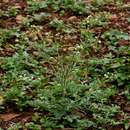en
names in breadcrumbs


Parthenium is a genus of North American shrubs in the tribe Heliantheae within the family Asteraceae and subfamily Asteroideae.[4][2][3]
The name Parthenium is an evolution of the Ancient Greek name παρθένιον (parthenion), which referred to Tanacetum parthenium.[5][6] [7] The name is possibly derived from the Greek word παρθένος (parthenos) which means "virgin".[8]
Members of the genus are commonly known as feverfew.[9] Notable species include guayule (P. argentatum) which has been used as a rubber substitute, especially during the Second World War;[10] and also P. hysterophorus, a serious invasive species in the Old World.[11]
These include:[3]
In North America, the Jicarilla Apache people used Parthenium incanum for medicine (Opler 1946: 8). The sap of guayule (P. argentatum) is a source of natural rubber.[12] Parthenium hysterophorus is a common invasive species in India, Australia, and parts of Africa. Its pollen can cause allergies and the sap is toxic.
Wild quinine (Parthenium integrifolium)
Parthenium is a genus of North American shrubs in the tribe Heliantheae within the family Asteraceae and subfamily Asteroideae.
The name Parthenium is an evolution of the Ancient Greek name παρθένιον (parthenion), which referred to Tanacetum parthenium. The name is possibly derived from the Greek word παρθένος (parthenos) which means "virgin".
Members of the genus are commonly known as feverfew. Notable species include guayule (P. argentatum) which has been used as a rubber substitute, especially during the Second World War; and also P. hysterophorus, a serious invasive species in the Old World.